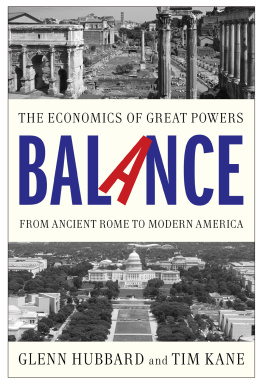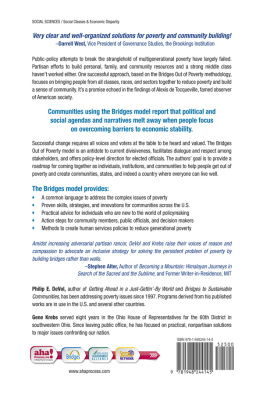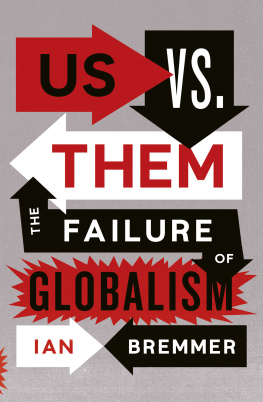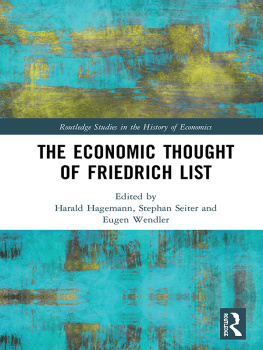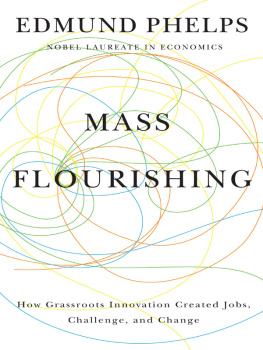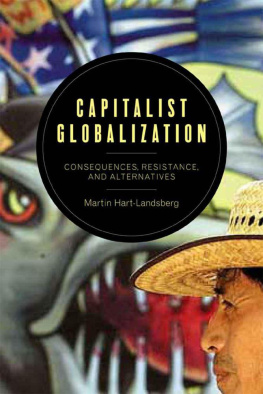The Wall and the Bridge
THE WALL AND THE BRIDGE
FEAR AND OPPORTUNITY IN DISRUPTIONS WAKE

GLENN HUBBARD

Copyright 2022 by Glenn Hubbard. All rights reserved. This book may not be reproduced, in whole or in part, including illustrations, in any form (beyond that copying permitted by Sections 107 and 108 of the U.S. Copyright Law and except by reviewers for the public press), without written permission from the publishers.
Yale University Press books may be purchased in quantity for educational, business, or promotional use. For information, please e-mail (U.K. office).
Set in Gotham & Adobe Garamond types by
Integrated Publishing Solutions.
Library of Congress Control Number: 2021939970
ISBN 978-0-300-25908-7 (hardcover : alk. paper)
A catalogue record for this book is available from the British Library.
This paper meets the requirements of ANSI/NISO Z39.48-1992 (Permanence of Paper).
Preface
When I began my study of economics in the 1970s, the United States was already undergoing significant changes on account of structural shifts in technology and globalization. Industries, firms, and jobs were being upended. While those experiencing business failures or job losses felt these changes acutely, economists and political leaders were slow to pay attention. Eventually, waves of populist fears of change became a groundswell, and elites began to notice in earnest.
My own journey as an economist actually unfolded at the same time as the deindustrialization of Youngstown, Ohio, which I note in the book. My first college economics course in September 1977 introduced me to skills that became more valuable over time, thanks to both technological change and globalization. Youngstowns steel closures began in earnest that month, and it suffered heavily from those same changesa cautionary illustration of losses from economic forces that benefited many others, including me. While I worked hard and had the blessing of great teachers and mentors as an undergraduate at the University of Central Florida and a Ph.D. student at Harvard University, I also found significant public support for gaining the skills of an economist. Without assistance from the federally funded National Merit Scholarship and the National Science Foundation, I could never have become an economist and benefited from these structural changes.
This book is about noticing and, more important, about ideas to address those structural, disruptive changes accompanying economic progress. From the dawn of modern economics, thinkers like Adam Smith, a central figure in this book, knew that progress and disruption were inseparable, like the two sides of a coin. Smith articulated rules of the game for a successful economy and championed mass flourishing, in which individuals broadly were prepared to compete in a dynamic economy.
Contemporary economics in the Smithian spirit often embodies the classical laissez-faire traditions and modern neoliberal perspectives more completely than Smith himself. Smith, who wrote The Theory of Moral Sentiments almost two decades before writing his magnum opus, The Wealth of Nations, saw the economy as a moral system of flourishing, not just an economic system for generating incomes. The narrow neoliberal, laissez-faire take has led to a strained political debate between capitalism and socialism. More ominously, neoliberals take public support for the dynamic competitive economy for granted. Recent political events, with the resurgence of populism, suggest otherwise.
The all-too-common political challenge to the increasingly flimsy laissez-faire defense of the economic order is the wall. A wall can be physical (from Hadrians ancient structure in Britain to President Donald Trumps border barrier), but it is generally a metaphor for barriers against changelike changes in technology or global markets. Walls of protection often come from nostalgia, a desire to restore the economy to the way it was, the good old days. But the economic tinkering that wall building requires is self-destructive for the economy as a whole and even for those supposedly protected. Smith saw that; he wrote The Wealth of Nations in response to such tinkering by mercantilists.
The antidote or counterargument to a wall is a bridge. Bridges prepare individuals for, and reconnect them to, participation in a dynamic economy. In an economic sense, they are required for mass flourishing. Politically and socially, we need bridges in order to regain public support for the economic system.
Populist leaders and commentators often blame economists for not noticing real economic pain from change, or for handing out laissez-faire pieties as band-aids. While there is some truth to this, economics is not the problem and offers many solutions. Such solutions are familiar in spirit both to Smith and the Econ 101 course you may have taken in college. Those solutionsbridgesare the only realistic alternative to destructive walls; they can sustain popular support for openness and dynamism.
Populist pressures have shifted politics from accepting change toward building walls against change, as opposed to building bridges of adjustment. Walls and bridges have thus become the new counterpoints in policy debates, with walls too often winning the debate because of a failure of economists to fully engage.
This book follows my own journey of noticing the problems and assessing walls and bridges in the light of classical and recent economics. It begins with s description of the key structural economic changes of technological change and globalization. I draw on my experience as President George W. Bushs chief economic advisor in 2001, and the pain that my Columbia students and I observed on recent visits to Youngstown.
chronicles the irony that our present tensions came about from a lack of readiness when walls fell. Without the Berlin Wall, trade barriers, and transportation and communications costs, among other limitations, we gained opportunities for many industries and communities, while others suffered painful adjustments. We were ready to cheer on the gainers, but had little to offer the losers.
Chapters chronicles three departures from Smiths (and most contemporary economists) viewsprotecting particular jobs, protecting particular products or industries, and protecting workers and communities. These might seem like relatively modest walls, aiming to strengthen society at the small cost of lost efficiencybut they risk the economys dynamism. Smiths vision remains correct against these soft walls, but the punchline is less laissez-faire than a call for bridges.
. That chapter outlines an economic approach to bridge building, marrying Smithian mass flourishing to the modern economy. It suggests supporting training and rebuilding social insurance to focus on structural, not just cyclical shifts. Abraham Lincolns land-grant colleges, Franklin Roosevelts unemployment insurance, and the G.I. Bill offer lessons on partnerships between federal support and local needs and inclusion.
While individual agency in bridge building is important, business and government have major roles to play. gains from publicprivate collaboration and from tailoring assistance to local needs.
concludes with three summary observations. Mass flourishing is a moral as well as economic imperative; it requires bridges, not walls; and it depends on intentional business and government action.
The novel coronavirus pandemic beginning in 2020 only amplifies the need for bridges. Sadiq Khan, the mayor of London, tweeted on November 7, 2020, in response to the election of President Joe Biden and Vice President Kamala Harris, that its time to get back to building bridges, not walls. Yet the developments so far in 2021 are not yet reassuring. The Biden administration is relying on another kind of wall, transfer payments, that will likely leave disadvantaged communities worse off in the long run. This book makes the case for designing and executing bridges to mass flourishing.
Next page

